Easter is one of the most felt holidays and celebrated by Italians: today we will discover the most special ways and Italian traditions with which we honor this holiday.
Easter: a deep religious meaning
For the faithful, Easter has, first of all, a religious meaning that is not limited to the feast day alone.
The celebrations begin a week in advance, during what is commonly called “Palm Sunday”: a day dedicated to the memory of when Jesus triumphantly entered Jerusalem and was welcomed by the faithful who waved palm leaves.
During this day, the faithful go to church to attend mass and return home with blessed olive branches (in the absence of palms, the olive tree is used as a substitute).
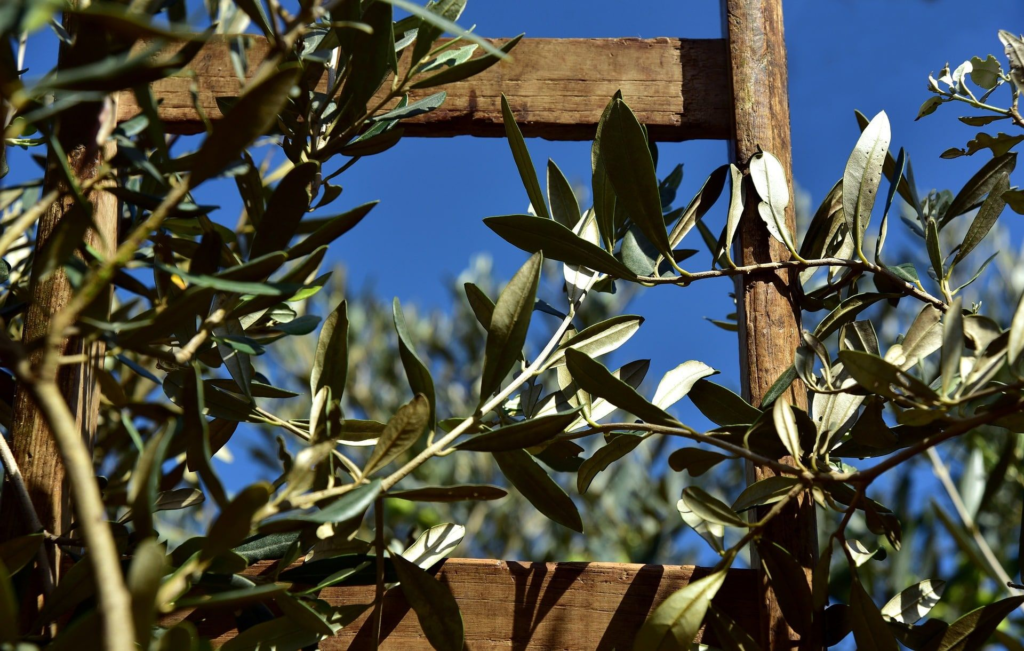
fremondoweb
Starting from this Sunday begins Holy Week, full of very significant rites: on Thursday we honor the anniversary of the Last Supper and the Eucharistic celebration; on Friday we participate in the Way of the Cross during which we retrace the process, the Calvary and the death of Jesus; finally, at midnight on the Sabbath, the resurrection of Jesus is announced by the sound of bells.
Sunday is the day of Easter: Lent is over, fasting is over and you participate in the traditional Easter breakfast.
What about Easter Monday? For the church this day is called Easter Monday and recalls the meeting between the winged messenger and the women who reached the empty tomb.
Easter traditions in Italy: the cities to visit for unique rites
Every Italian region has its traditions and its Easter rites and some of these are really special. If your desire is to attend some Easter ceremonies that you will not forget, we suggest you to participate in one of those that follow and that belong respectively to the cities of: Sulmona, Florence, Caltanissetta and Prizzi.
Our Lady fleeing to Sulmona
A tradition that every year attracts a lot of participation is that which belongs to the city of Sulmona.
According to local tradition Virgin Mary, after learning of the death of her son, took refuge in the church of San Filippo Neri and, San Pietro and San Giovanni have the task of announcing to her that Jesus has risen.
The statues arrive in the square at eleven and a half and move up to the threshold of the church, stopping right there in front.
Saint John is the first to knock on the door of the church but Mary does not answer him. Then, it is the turn of Saint Peter but not even he receives response. Finally, it is again up to Saint John who will finally get an answer from the Virgin Mary.
The door of the church opens and Mary comes out of her refuge to reach the center of the square: she begins her run full of hope, during which Mary changes in appearance, loses the black veil that gives way to the green dress, the handkerchief in his hand is replaced by a red rose and twelve doves soar behind him.
The representation, very engaging for the participants, creates great emotion: after the meeting, the statues return to being simple statues and are placed to start the procession.

ilcapoluogo
The Explosion of the wagon in Florence
On Easter morning, a spectacular explosion takes place in Florence. A mechanical dove is activated to hit a cart in front of the Duomo of Florence and the impact makes light the fireworks in the wagon.
Probably this rite can be traced back to the time of the first crusade and, even today, this tradition has a really important meaning, especially for the Florentines.
For example, for centuries it has been believed that, on the basis of the flight of the dove that causes the explosion of fires in the cart, the trend of the harvest season in the countryside could be deduced.
Florence is a ritual that every year attracts many tourists and curious people who, in addition to citizens, go specifically to the city to attend the ceremony.
But how does the rite take place? The first step is to escort the large cart from Piazzale del Prato to Piazza del Duomo: at least 150 people do it.
Then, the cart is placed between the Baptistery and the Cathedral and, with the background of Gloria in Excelsis Deo, you start the dove that activates the fireworks and you watch the show.
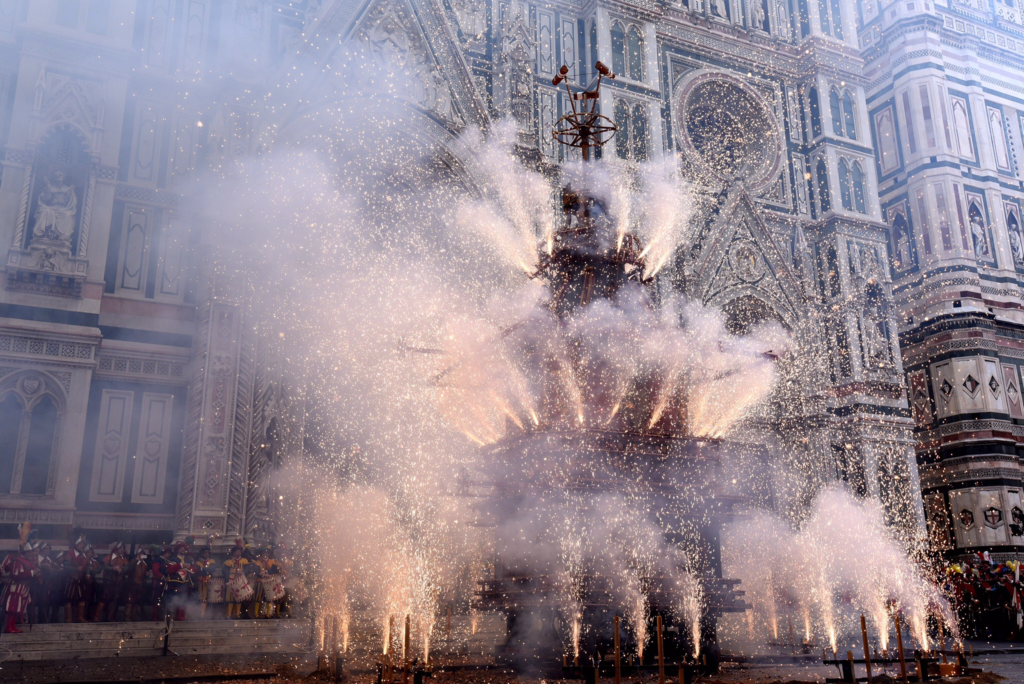
michelangelobuonarrotietornato
The traditions in Sicily
Among the many and different traditions put in place on the occasion of Easter in Sicily, we mention the Real Maestranza of Caltanissetta, a historical association that brings together people who are part of individual categories of artisans gathered in association town.
The group accompanies the city from Palm Sunday until Easter.
Also in Sicily, this time in Prizzi, there is a truly singular celebration: Lu ballu di li diavoli, “Il ballo del diavolo” indicates a celebration during which participants wear disturbing masks to represent the devil and death.
Specifically, the devils are dressed in red overalls and wear a mask on the face with a cloth tongue dangling, they have a chain in their hand and a goat skin around the shoulders.
Death, on the other hand, wears a leather mask and a yellow suit, while clutching a crossbow between his hands.
These characters harass passers-by throughout the day with only one purpose: to get money. During the day they will prevent the meeting between the statues of the Risen Christ and Our Lady, putting in place “Lu ballu di li devivoli” until they are defeated by the angels accompanied by the bells at party.
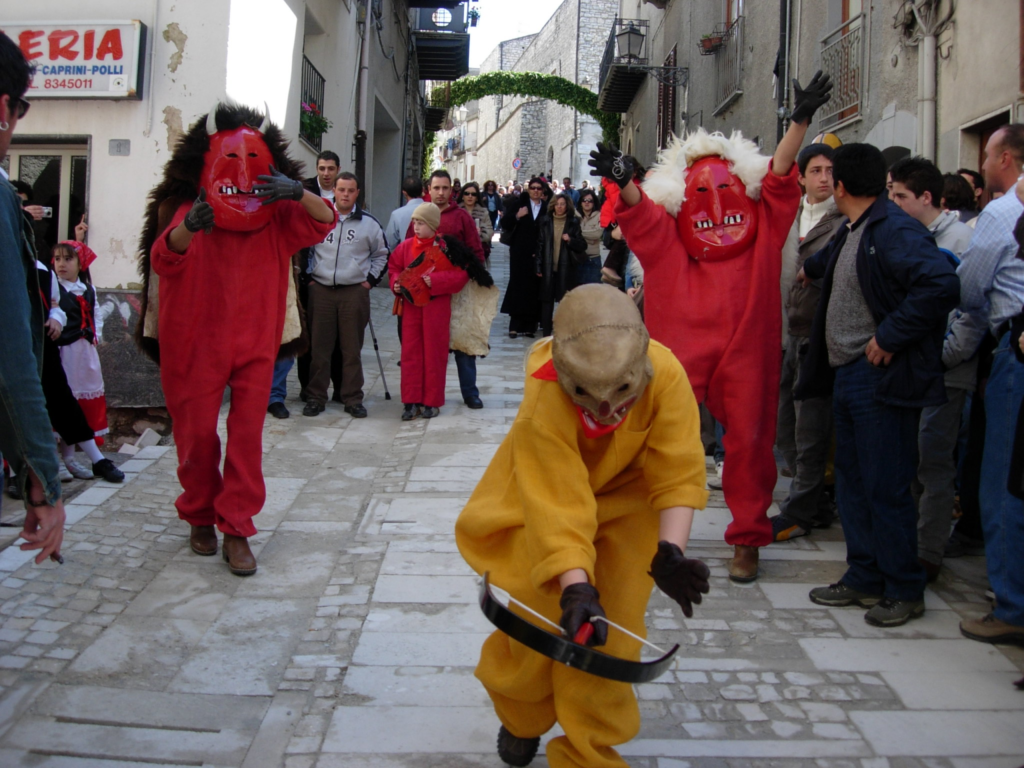
palermo.repubblica.
What Italians eat at Easter
From north to south, when it comes to traditional food and recipes, Italy is unsurpassed. Also on the occasion of Easter there are many dishes that can not miss on the tables of Italians, let’s see some.
The Dove of Easter
Recipe of Lombard origin, the easter dove is on the tables of every region of Italy. The basic ingredients are wheat, sugar, eggs, yeast and salt and contains candied citrus peel. A dessert that cannot be missed at Easter, both for its inimitable taste, and because it brings good omen and symbol of peace.
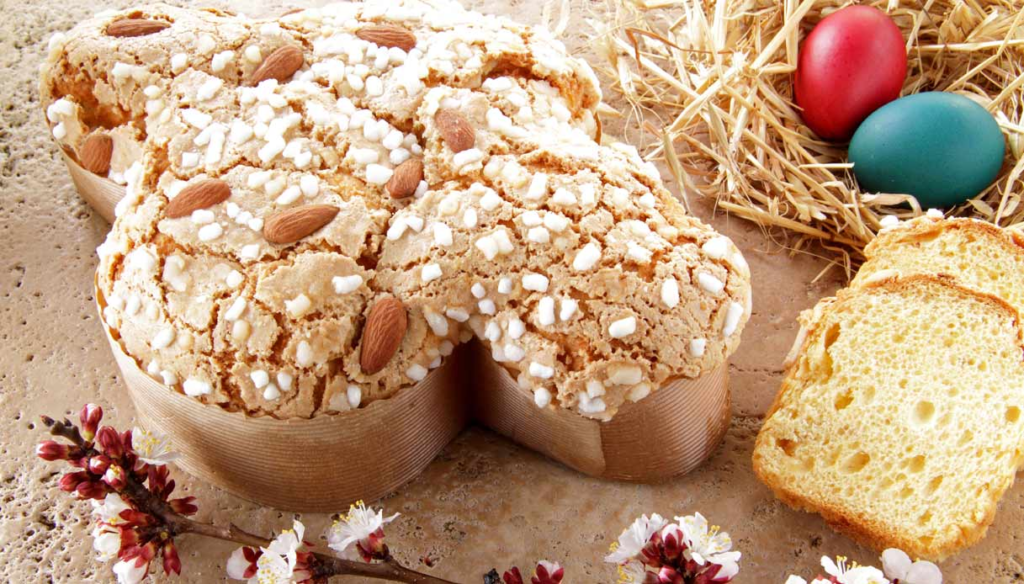
buonissimo
Casatiello and the pastiera of Campania
From Campania throughout Italy and beyond, casatiello and pastiera are among the most delicious dishes of the Easter culinary tradition.
The first is a rustic cake in the shape of a donut, filled with cheese and salami, decorated with eggs with the whole shell (usually, four) placed on the surface. His preparation takes time and effort but his goodness will repay all the effort!
Pastiera, on the other hand, is a sweet made with shortcrust pastry filled with ricotta and candied fruit. There are different versions but they are all delicious!
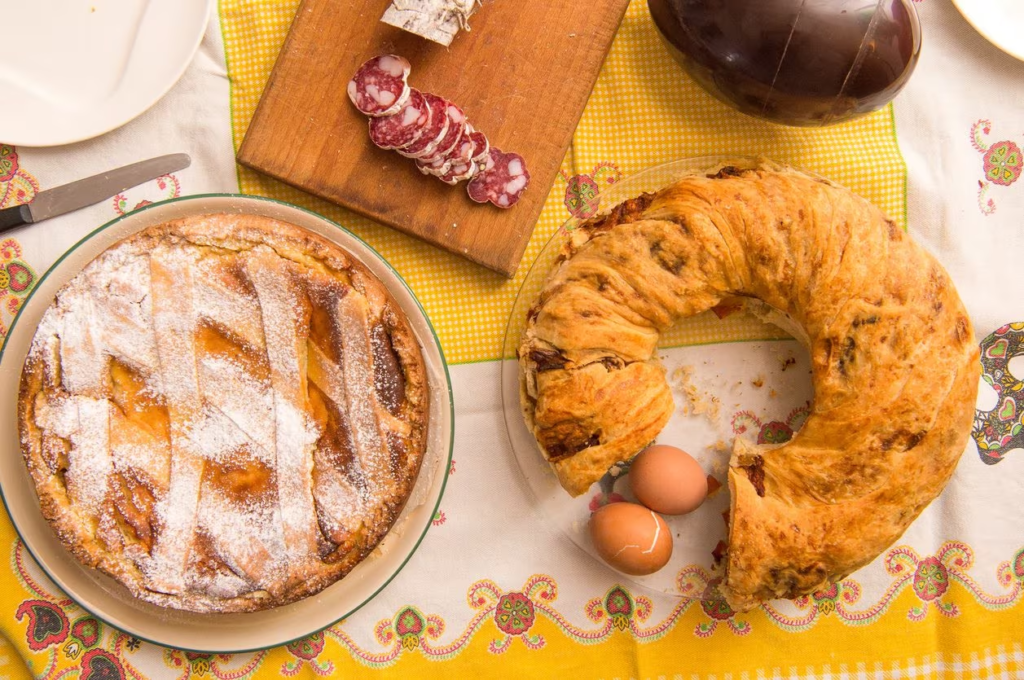
cookist
The Easter lamb
As the Bible says, every Jewish family was forced to sacrifice a lamb before leaving for the journey to the Promised Land and had to mark with the animal’s blood the taxes of their house so that, when the Angel of the Lord came to do justice and kill all the firstborn of the Egyptians, he could recognize the innocent and save them.
Here lamb takes on great significance for the faithful of Christianity as well as being a traditional dish.
The Genoese Pasqualina cake
A delicious Easter cake with many vegetables: the cake Pasqualina is made of chard, spinach, herbs and ricotta enclosed in a thin sheet. A pact that does not require a particularly difficult preparation and that can be cooked at any time of the year.

buonissimo
The irreplaceable chocolate eggs
Last but not least there are Easter eggs, a symbol of rebirth and a sign of good luck. The custom of giving them dates back to the fourteenth century, but the first chocolate egg was born at the time of King Louis XIV, thanks to the idea of David Chaillou, the first mâitre chocolatier and only licensed to sell chocolate in Paris.
Of dark chocolate, milk, white, with hazelnuts, stuffed and not: they exist for all tastes! They are desired by the little ones and also appreciated by the adults.

tag24
Copertina: grottopojana
